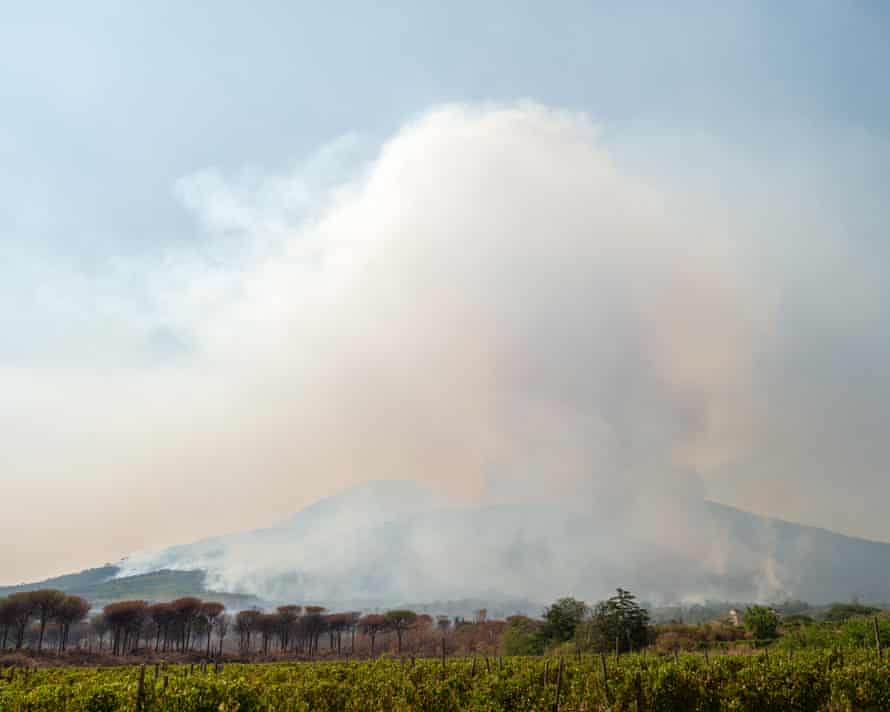Tourist trails on Mount Vesuvius in southern Italy have been closed as firefighters continue to battle a huge blaze sweeping across the volcano’s slopes. Officials have also warned of another “challenging day” for crews tackling France’s largest wildfire since 1949.
The wildfire on Mount Vesuvius, near Naples, broke out several days ago and by Saturday afternoon had spread to roughly 3km (1.9 miles) wide, destroying hundreds of hectares of woodland and killing wildlife. Thick smoke was visible from both Pompeii and Naples.
Six Canadair firefighting aircraft have been deployed from the state fleet, while teams comprising firefighters, soldiers, forestry corps, police and civil protection volunteers from across Italy are working on the ground. Drones are also being used to track the fire’s spread, according to the national fire service. Efforts have been hampered by the ongoing heatwave.
Vesuvius National Park authorities confirmed the closure of the volcano’s trail network for safety reasons and to allow firefighting and clean-up operations in affected areas. Pompeii’s archaeological park remains open to visitors.
The fire has hit the Terzigno pine forest particularly hard, along with nearby woodlands close to the towns of Trecase, Ercolano and Ottaviano at the volcano’s base. Francesco Ranieri, the mayor of Terzigno, described the situation on Saturday night as “very critical” but credited the firefighters with preventing the flames from reaching homes.
The cause of the fire remains unconfirmed, although there are strong suspicions of arson. Ranieri suggested there may be “a criminal hand” behind the disaster.
In France’s southern Aude region, firefighters have brought a massive wildfire under control after it claimed one life and injured several others. However, authorities warned that Sunday’s efforts would be complicated by soaring temperatures and a hot, dry wind.
“It’s a challenging day, given that we are likely to be on red alert for heatwave from 6pm, which will not make things any easier,” said Christian Pouget, prefect of the Aude department.
Wildfires are becoming more frequent and severe across the globe, with the combination of heat, drought and strong winds creating ideal conditions for their spread. Scientists say human-caused climate breakdown has increased both the likelihood and size of fires in southern Europe, northern Eurasia, the US and Australia, with some evidence of similar trends in southern China. Globally, the wildfire season has lengthened by around two weeks on average.



